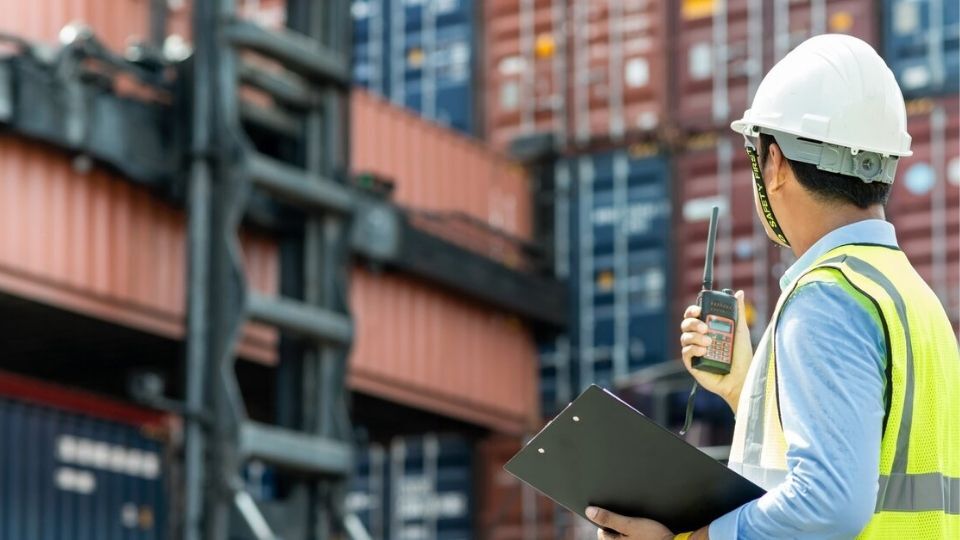The ultimate 2025 guide to fleet telematics: Maximize safety & efficiency
Modern fleet telematics is a data-driven solution that integrates vehicle sensors, 5G, and AI analytics to improve safety, efficiency, and compliance for commercial fleets.
By Geotab Team
Sep 2, 2025
.jpg)
Key Insights
- Telematics uses data from vehicle sensors to improve fleet safety, boost operational efficiency, and enable predictive maintenance.
- The technology automates compliance reporting, helping fleets avoid fines and audits while securing data with encryption and other safeguards.
- Implementing a telematics platform provides a clear ROI and requires a strategic approach to vendor selection and driver adoption.
In 2025, managing a fleet of vehicles is more about data than ever before. This isn't just a trend; we’ve reached a tipping point where data from your vehicles has become essential for keeping drivers safe, running efficiently and meeting compliance obligations. Geotab has been a leader in providing this crucial data for 25 years, helping businesses just like yours make smarter decisions. This guide will show you how using this data can help you get the most value out of your fleet and make roads safer for everyone.
What fleet telematics means today
Fleet telematics, at its core, means collecting and transmitting data from vehicles to a central system for analysis and action. In 2025, this definition involves significant technological advances, including widespread 5G network connectivity, advanced AI-powered analytics, sophisticated EV battery intelligence and fully integrated video options.
The global market for automotive telematics is projected to reach an impressive $127.23 billion by 2034, driven by accelerating regulatory shifts and the rapid adoption of electric vehicles. 5G represents the fifth-generation mobile network, enabling the high-speed data transfer critical for real-time applications, while edge analytics refers to processing data at or near the data source itself (e.g., the vehicle), reducing latency.
How data flows from vehicle to dashboard
The journey of fleet data begins with sophisticated sensors located inside and outside the vehicle. This raw data is then captured by a Geotab GO device, which transmits it securely via cellular or 5G networks to the MyGeotab cloud platform. From there, the information populates user-friendly dashboards and is accessible via APIs for third-party integrations.
Sensor → Geotab GO device → cellular/5G network → MyGeotab cloud → dashboards/APIs
Data is transmitted in near real-time and stored in a secure, SOC-2-certified cloud environment. Geotab ensures data security through encryption, over-the-air (OTA) firmware updates and open APIs.
Key data points telematics captures
Fleet tracking systems capture a wealth of critical data points that transform raw inputs into actionable insights. These include:
- GPS location: Real-time tracking of vehicle position.
- Speed: Monitoring adherence to speed limits and safe driving.
- Harsh braking: Detecting aggressive deceleration, a key indicator of risky driving.
- Seat belt usage: Ensuring driver safety and compliance.
- Fuel usage: Tracking consumption for efficiency analysis and cost savings.
- Battery state-of-charge: Ensuring EVs have sufficient charge to do their jobs.
- Fault codes: Diagnostic codes indicating potential vehicle issues, essential for preventive maintenance.
- Temperature (reefer): Critical for temperature-sensitive cargo.
- Camera video: Visual documentation of driving events and incidents.
- G-force collision data: Detailed impact information for accident reconstruction.
This raw input is then processed by predictive analytics, which converts it into valuable risk scores, maintenance predictions and optimized route insights. For instance, the Geotab Safety Center has demonstrated a 5.5% reduction in predicted collisions through its advanced risk analytics.
A utilities service provider in Ireland reduced speeding in target zones by 76% over 3 months after introducing Geotab’s GO devices and MyGeotab fleet management platform. Overall, the fleet improved its average safety score — based on speeding, harsh braking, seatbelt usage, harsh acceleration and harsh cornering — to 88 out of 100, 6% better than the peer group leaders’ benchmark score of 83.
How telematics drives safety and efficiency
Advanced fleet monitoring solutions like Geotab provide the tools needed to proactively enhance safety and significantly boost operational efficiency across your fleet.
Real-time driver coaching and scorecards
Telematics empowers fleet managers to support safer driving behaviors through immediate feedback and structured performance reviews.
In-cab alerts provide drivers with real-time notifications about unsafe events, such as harsh braking or speeding. Post-trip coaching, informed by detailed data, allows for targeted discussions on specific incidents. Mobile scorecards, accessible via apps like Geotab Drive, offer drivers a clear view of their performance metrics over time and incentives to improve, encouraging self-correction.
Research shows that video telematics can reduce fatal crashes by 20% and injury crashes by 35%. Comparing individual driver scores against anonymous “digital twins” from similar fleets can provide highly targeted coaching opportunities.
“When we looked at the inputs for driver safety, we realized that we had a global score of 40.5. That's very low. And so the first goal that we set was we wanted to get to a global score of 75 within six months. In three months, we reached 80.5, I believe. So we doubled the score essentially in three months.”
Evan Sloan, Enterprise EHS & Workers’ Compensation Lead, City of Raleigh
Predictive maintenance and uptime gains
Modern telematics systems offer sophisticated predictive maintenance capabilities, moving beyond costly and time-consuming reactive repairs.
Fault-code monitoring enables early detection of potential mechanical issues. AI-driven analytics can forecast failure probability, allowing maintenance teams to schedule proactive service. This approach significantly reduces unplanned downtime, often by up to 30%, and can cut repair costs by 20%.
| Component | Predictive Signals |
|---|---|
| Brakes | Abnormal temperature spikes, excessive harsh braking |
| Diesel Particulate Filter (DPF) | High exhaust temperatures, frequent regeneration, vibration patterns |
| 12v vehicle battery | Low voltage, slow cranking, frequent jump starts |
| EV battery | Rapid discharge, inconsistent charging patterns |
Route, fuel and idling optimization
Fleet management systems play a crucial role in optimizing operational costs. Route optimization leverages real-time traffic and delivery data to identify the most efficient paths. User-defined geofences can trigger alerts when vehicles enter or exit designated areas, helping manage operational zones and ensure drivers stick to routes. Integrating fuel-card data with telematics provides a holistic view of fuel consumption patterns.
These features collectively work to drastically cut idle time and reduce harmful emissions. With North American fleets facing escalating fuel costs and increasing fines for excessive idling, Geotab's fuel analytics offers a powerful solution to counteract these financial burdens.
Meeting compliance with connected data
Staying compliant with complex transportation regulations is a major challenge for fleets. Fleet tracking and management software simplifies this by automating critical reporting processes and ensuring data integrity.
Automating ELD, HOS and DVIR reporting
Many fleets are required to record hours of service (HOS) with Electronic Logging Devices (ELDs), plus Driver Vehicle Inspection Reports (DVIRs) to comply with United States Federal Motor Carrier Safety Administration (FMCSA) and Transport Canada regulations.
Geotab’s fleet tracking system automatically records driving hours and generates alerts for potential HOS violations. The Geotab Drive app automates DVIR workflows by streamlining pre- and post-trip inspections, ensuring vehicles are roadworthy and records are easily accessible.
Automating these workflows helps fleets avoid severe penalties, including hefty fines and out-of-service orders, by ensuring their logs are 100% accurate and verifiable. For example, with automated compliance processes, fleets can minimize the risk of:
- HOS violations: $1,000-$11,000 per incident
- ELD non-compliance: $2,000-$25,000 per violation
- Out-of-service orders: Lost revenue plus expensive repairs
- Compliance, Safety, and Accountability (CSA) score impacts: Higher insurance premiums and audit frequency
- Suspension or revocation of operating authority: Severe or repeated non-compliance can result in a fleet losing its ability to operate entirely
- Individual driver fines or commercial driver's license suspensions: Drivers can face direct penalties, impacting their work and stress levels
- Civil liability and lawsuits: In the event of a collision, inaccurate or falsified records can significantly increase a fleet's legal liability, leading to costly civil lawsuits and substantial financial damages
Inspection, maintenance and audit readiness
Telematics solutions significantly improve audit readiness by centralizing and digitizing crucial records. Digital storage of inspection records, complete work-order histories and maintenance receipts make it simple to produce documentation during an audit.
For example, a utility fleet using digital DVIRs can easily pass a surprise DOT audit, providing all necessary documentation instantaneously without manual paperwork.
Data privacy and cybersecurity safeguards
While cutting-edge fleet management platforms are open for integration, they maintain rigorous security protocols. Reputable telematics providers apply encryption standards like TLS 1.2+ for data in transit. Two-factor authentication adds an extra layer of security for user access. Look for ISO 27001 certification, an international standard for information security management.
An open platform does not mean an open door, and Geotab undergoes regular third-party penetration testing and over-the-air (OTA) patches ensure continuous protection against evolving cyber threats.
Choosing and implementing the right fleet management platform
Selecting and deploying a telematics solution requires careful consideration to ensure it aligns with your fleet's specific needs and strategic objectives.
Evaluation criteria and vendor checklist
When evaluating telematics platforms, focus on capabilities that directly address your pain points and offer measurable improvements.
- Safety analytics depth: Look for robust features like harsh event detection, risk scoring and in-cab coaching.
- Compliance modules: Ensure comprehensive support for ELD, HOS and DVIR regulations specific to your region.
- Open APIs: Verify the platform's ability to integrate seamlessly with your existing fleet management, dispatch or payroll systems.
- Scalability to EVs: Confirm future-proofing, including support for electric vehicle battery intelligence and charging management.
- Security certifications: Prioritize providers with ISO 27001 certification, SOC 2 compliance and FIPS 140-3 validation.
Running a pilot program is a valuable way to validate collision-detection accuracy and benchmark reporting against your current operations.
Not all telematics devices are created equal. Far from it. Finding the right one for your fleet is essential to successfully incorporate an advanced fleet tracking system. Use our Choosing the right telematics device checklist to compare.
Building a business case and ROI timeline
Translating the benefits of advanced data-driven fleet tracking into a compelling business case is essential for securing leadership buy-in. To build your business case, it’s crucial to understand your fleet costs across vehicles’ lifecycles, as well as the potential impact of reduced collisions, maintenance savings and fuel cuts.
For instance, typical return on investment for Geotab users ranges from 3:1 to 6:1 within the first year by reducing costs related to collisions, fuel use and maintenance. Geotab users often see their initial investment in telematics paid back within 12 months.
Use the following formula to understand your potential ROI range:
(Cost avoided - Telematics investment) ÷ Telematics investment
Field services fleets, try our fleet routing ROI calculator to see how much you could save.
Fleets, including your competitors, are adopting telematics quickly. By some estimates, the U.S. fleet management market is projected to reach $35 billion by 2030, underscoring the urgency for fleets to adopt advanced fleet tracking solutions and gain a strategic edge.
Team Goliath, an operator of 14 Domino’s Pizza restaurants, reduced their annual insurance costs by over $100,000, with Geotab’s safety features like driver scorecards and video telematics.
“We love Geotab! When I talk to other Domino’s Pizza franchisees and they ask me how it’s going with our fleet, I tell them I cannot imagine having these cars without the technology installed. It’s an if-then statement for me. If you get a fleet of cars, then you need to have Geotab.”
Stephanie Reisch, Co-owner, Team Goliath Inc. d/b/a Domino’s Pizza
Driver adoption and change management tips
Successfully adopting a fleet monitoring system hinges on driver acceptance. Strategic change management can significantly ease the transition.
- Involve drivers early: Engage them in the evaluation process and explain the benefits.
- Share transparent scorecards: Provide clear, accessible data on performance, focusing on constructive feedback.
- Gamify safety: Introduce friendly competitions and leaderboards to incentivize safer driving habits.
- Reward improvements: Recognize and reward top performers or those showing significant progress.
- Provide continuous feedback: Utilize the Geotab Drive app to offer ongoing insights and support.
According to Team Goliath, the Domino’s Pizza operator, some employees were initially skeptical about having video cameras in the cars they drive, but now they support the technology. Knowing there’s a video recording of what’s actually happening out on the road provides drivers with peace of mind that they’re safe and will not have to defend themselves against someone else’s version of the truth if a collision occurs.
What’s next for connected fleets
The cutting edge of telematics continues to advance rapidly, with several key trends shaping the future of fleet management.
AI video telematics and risk scoring
The integration of artificial intelligence with video telematics is revolutionizing driver monitoring. Camera-based systems now offer real-time driver monitoring, including distraction alerts. Automated incident labeling accurately categorizes events, streamlining analysis and coaching.
At transport and logistics fleet Plastic Express, drivers were initially hesitant about video telematics, but driver and road-facing cameras soon proved essential for exonerating drivers and boosting safety. The blend of Geotab with partner Netradyne’s AI-driven green-zone score offered critical insights on following distance, driver drowsiness and distracted driving. As a result, Plastic Express has seen a 13% decrease in severe alerts and improvements in speeding instances, stoplight violations and stop sign infractions.
Video telematics is experiencing rapid growth, and is predicted to see a 12.7% compound annual growth rate by 2030.
Managing EV range, charging and emissions rules
As electric vehicles become more prevalent, fleet tracking systems are adapting to meet the unique demands of fleet EVs. This includes precise battery state-of-charge reporting, smart charging schedules to optimize energy costs and accurate carbon tracking to comply with existing and emerging emissions regulations like California’s Advanced Clean Trucks (ACT) rule.
Looking ahead, bidirectional charging insights will become crucial for future vehicle-to-grid monetization opportunities.
Benchmarking with digital twins and industry data
Digital twin benchmarking involves comparing your fleet's key metrics to anonymized peers of similar size, region and duty cycle. This feature provides invaluable context, revealing how your fleet performs against industry standards. Continuous benchmarking uncovers new targets and opportunities for improvement even after initial goals are met, driving ongoing optimization.
"If you're looking to answer questions about your fleet, there's not a better way to go about it [than with Geotab]. You have live real-time data about your drivers, the vehicles, the costs associated with them. It really helps you leverage data in a meaningful way. The data that we're pulling in from vehicles is becoming more and more robust. It's actually driving the industry in entirely new and unique directions in the current era that we're living in of fleet maintenance."
Austin Lundy, Senior Technology Specialist, City of Raleigh
Conclusion
The digital age has fundamentally reshaped fleet management, enabling a shift from reactive practices to proactive, data-driven fleet strategy. By embracing the latest features telematics has to offer, fleets are not just tracking vehicles, they are building a culture of safety, efficiency and compliance from the ground up — and saving their money and effort in the process.
This guide provides the foundational knowledge and actionable steps you need to leverage these technologies, ensuring your fleet remains resilient, profitable and ready for the future of transportation.
Find out more about the potential return on investment for your fleet — book a demo here.
Subscribe to get industry tips and insights
Frequently Asked Questions
Fleets may see a substantial drop in risky driving behaviors within 90 days of actively implementing real-time coaching and scorecard systems.
The City of Raleigh, North Carolina, doubled its safety score in three months after activating GO devices across its vehicle fleet services department, reducing monthly speeding instances by 65%.
This rapid improvement is driven by the immediate feedback from in-cab alerts and post-trip coaching, which quickly build driver awareness and reinforce safer habits, leading to sustained behavioral change.
Yes, modern telematics systems like Geotab are fully designed for compatibility with battery electric vehicles and plug-in hybrids.
For example, Geotab captures essential EV-specific data, such as battery state-of-charge, available range and charging data via the same standard GO device and MyGeotab cloud platform used for conventional vehicles. Geotab seamlessly integrates mixed fleets and provides managers with crucial insights for optimizing EV performance and charging strategies.
Use this Telematics RFP checklist for EV support to verify the telematics providers you are researching have everything you need to fully support the adoption and management of the electric vehicles in your fleet.
Fleets can typically expect an ROI ranging from 3:1 to 6:1 within the first year of implementing a fleet tracking system with advanced safety and efficiency features. This significant return is achieved through multiple channels: a substantial reduction in collision costs, optimized fuel usage and lower maintenance expenses due to predictive analytics.
To prove this ROI, it is crucial to track savings against baseline key performance indicators (KPIs), such as accident rates, fuel consumption per mile and maintenance spend, before and after telematics implementation. Documenting these results rigorously, for example through detailed reports and financial analysis, provides a clear and compelling financial narrative for stakeholders.
Motivating drivers to embrace telematics is key to successful adoption. Strategies include involving drivers early in the process by explaining the safety and efficiency benefits directly to them, such as how telematics can protect them in an accident, identify fatigue or help make the administrative aspects of their jobs easier. Highlighting the benefits (e.g., reducing road risks, improving delivery times) rather than just "monitoring" can foster drivers’ buy-in.
Additionally, rewarding top performers with recognition programs or incentives, for example, linked to improvements in their safety scorecard metrics, creates a positive culture and encourages friendly competition among drivers.
When selecting a fleet tracking solution provider, it is critical to ensure they meet robust cybersecurity standards to protect your sensitive fleet data. Look for providers with ISO 27001 certification, an internationally recognized standard for information security management, and SOC 2 compliance, which attests to their controls over data security, availability and privacy.
Furthermore, confirm they employ TLS-encrypted data in transit to secure data transfer and commit to regular third-party penetration testing to proactively identify and address vulnerabilities. These measures are vital for safeguarding your operational data from cyber threats.
The Geotab Team write about company news.
Table of Contents
Subscribe to get industry tips and insights
Related posts

The $4B Crisis: Video Intelligence as the Answer to Fleet Distraction
December 2, 2025
3 minute read

The True Cost of Cargo Theft: When Customer Trust is on the Line
November 24, 2025
2 minute read

Telematics device cost: Key factors that determine pricing
November 19, 2025
5 minute read

Law enforcement technology: Four trends to know for 2026
November 7, 2025
6 minute read

Four seasons of fleet intelligence with Geotab's Public Works solution
November 7, 2025
2 minute read

Infographic: What are the ripple effects of school bus driver turnover?
November 6, 2025
1 minute read